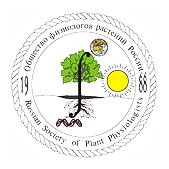Новости науки и практики // Март 2024

Convergent evolution of algal CO2-fixing organelles
Researchers at the University of Tsukuba identified the proteins of a CO2-fixing organelle, namely, "pyrenoid," in the marine algal group Chlorarachniophyta and revealed various pyrenoid-associated proteins among algal groups, suggesting the independent evolution of pyrenoids in different algal groups.
https://www.eurekalert.org/news-releases/1036206
Elevated [CO2] mitigates the effect of surface drought by stimulating root growth to access sub-soil water Through stimulation of root growth, increasing atmospheric CO2concentration ([CO2]) may facilitate access of crops to sub-soil water, which could potentially prolong physiological activity in dryland environments, particularly because crops are more water use efficient under elevated [CO2] (e[CO2]). This study investigated the effect of drought in shallow soil versus sub-soil on agronomic and physiological responses of wheat to e[CO2] in a glasshouse experiment.
Convergent evolution of water-conducting cells inMarchantiarecruited theZHOUPIgene promoting cell wall reinforcement and programmed cell death (OA) Luet al. show that pegged rhizoid differentiation inMarchantia polymorphais controlled by orthologs of the ZHOUPI and ICE bHLH transcription factors required for endosperm cell death inArabidopsisseeds. By contrast, pegged rhizoid development was not affected by disruption of MpNAC5, theMarchantiaortholog of theVNDgenes that control WCC formation in flowering plants.
A new plant’s name that tells a story
A new species and genus of fairy lantern, tiny glass-like white plants that feed on fungi, has been discovered in Japan. In the country renowned for its extensive flora research, the discovery of a new plant genus is extremely rare and has not occurred in almost 100 years.
https://www.eurekalert.org/news-releases/1035554
From growing roots, clues to how stem cells decide their fate
Researchers at Duke University have been making such movies by peering at stem cells near the root’s tip and taking snapshots as they divide and multiply over time, using a technique called light sheet microscopy. The work offers more than a front row seat to the drama of growing roots. By watching how the cells divide in response to certain chemical signals, the team is finding new clues to how stem cells choose one developmental path over another. The work touches on a fundamental question in biology, said associate research professor Cara Winter: “How do cells acquire their identities?” In other words, “how do you get all of the various cell types that make up an organism?”
https://www.eurekalert.org/news-releases/1034022
Scientists use blue-green algae as a surrogate mother for "meat-like" proteins
Researchers from the University of Copenhagen have not only succeeded in using blue-green algae as a surrogate mother for a new protein – they have even coaxed the microalgae to produce "meat fiber-like" protein strands. The achievement may be the key to sustainable foods that have both the 'right' texture and require minimal processing. Researchers from the University of Copenhagen have not only succeeded in using blue-green algae as a surrogate mother for a new protein – they have even coaxed the microalgae to produce "meat fiber-like" protein strands. The achievement may be the key to sustainable foods that have both the 'right' texture and require minimal processing.
https://www.eurekalert.org/news-releases/1035770
Acid sensor and calcium store discovered in plants
Using optogenetics, researchers have detected a new acid sensor in plant cells that is addressing a cell-internal calcium store.
https://www.sciencedaily.com/releases/2023/12/231215140312.htm
Biomolecular condensates – regulatory hubs for plant iron supply
Iron is a micronutrient for plants. Biologists from the Institute of Botany at Heinrich Heine University Düsseldorf (HHU) describe in a study, which has now been published in the Journal of Cell Biology, that regulatory proteins for iron uptake behave particularly dynamically in the cell nucleus when the cells are exposed to blue light – an important signal for plant growth. They found that the initially homogeneously distributed proteins relocated together into “biomolecular condensates” in the cell nucleus shortly after this exposure.
https://www.eurekalert.org/news-releases/1035107
When plants are attacked
When pathogens attack plants, the plant cells almost immediately react. The plant's cells begin to produce different kinds of small molecules called secondary messengers. These messengers travel throughout the cell membrane to begin the process of activating the immune system. These basic molecular pathways are the same whether you're a plant or animal, or even human.
https://www.eurekalert.org/news-releases/1035609
How molecular 'handedness' emerged in early biology
Chemists fill a major gap in origin-of-life theories.
https://www.sciencedaily.com/releases/2024/02/240228115459.htm
Researchers identify a key player in chromatin regulation in Arabidopsis thaliana
Known as the supportive scaffold for chromatin, the nuclear matrix has intrigued scientists since its discovery in the 1970s. While its existence in mammalian cells was recognized, its significance in plant nuclei remained elusive. The international research team has now unravelled this enigma, shedding light on the composition of the nuclear matrix and how the nuclear matrix influences chromatin status and plant development.
https://www.eurekalert.org/news-releases/1035431
Double trouble at chromosome ends
New findings suggest the end-replication problem, an old standby of biology textbooks, is twice as intricate as once thought.
https://www.sciencedaily.com/releases/2024/02/240228115250.htm
Growth regulator 5-aminolevulinic acid enhances the cold resistance of tomato plants
Low temperature stress, as one of the main abiotic stresses, severely hinders plant growth and has adverse effects on crop yield and quality. 5-Aminolevulinic acid (ALA), a growth regulator widely present in animals and plants.
https://phys.org/news/2024-02-growth-aminolevulinic-acid-cold-resistance.html
Researchers develop novel method to photosynthesize hydrogen peroxide using water and air
Researchers have developed a microporous covalent organic framework with dense donor-acceptor lattices and engineered linkages for the efficient and clean production of hydrogen peroxide through the photosynthesis process with water and air.
https://www.sciencedaily.com/releases/2024/02/240228115357.htm
Деревья по-разному реагируют на последствия землетрясений
В засушливых регионах леса восстанавливаются после землетрясений быстрее, чем во влажных.
https://www.nkj.ru/news/49973/
Increasing soil salinity: New discovery may help make crops more resilient
Salination causes harvests to fail across the globe. Plants die, or their growth is stunted. Researchers of Wageningen University & Research (WUR) have discovered that a local regulator protein encourages root growth in saline.
https://phys.org/news/2024-02-soil-salinity-discovery-crops-resilient.html
Researchers uncover a key link in legume plant-bacteria symbiosis
In this study, the researchers have now identified four essential phosphorylation sites that act as the catalyst for the symbiotic relationship between legume plants and nitrogen-fixing bacteria. The initial steps of the symbiotic pathway at the cell-surface are well-characterized, however, understanding of how the signal is relayed downstream has eluded the research field for years. The discovery of these essential phosphorylation sites is an important step towards translating the ability to form symbiotic relations with nitrogen fixing bacteria into crop plants.
https://www.eurekalert.org/news-releases/1034005
Plant growth regulators' impact on creeping bentgrass during heat, salt and combined stress
A recent study by scientists at Ohio State University sheds light on the intricate relationship between plant growth regulators and the resilience of creeping bentgrass under varying environmental stressors such as heat stress.
https://phys.org/news/2024-02-growth-impact-bentgrass-salt-combined.html
Novel RNA- or DNA-based substances can protect plants from viruses, scientists show
Individually tailored RNA or DNA-based molecules are able to reliably fight off viral infections in plants, according to a new study by the Martin Luther University Halle-Wittenberg (MLU) published in the International Journal.
https://phys.org/news/2024-02-rna-dna-based-substances-viruses.html
Новости
Новости науки и практики // Апрель 2024
Обзор научных новостей, опубликованных во всемирной паутине за последний месяцФосфорилирование плазматической мембраны H+-АТФазы Thr881 (треонин) участвует в светоиндуцированном открывании устьиц
Ученые из Университета Нагои (Nagoya University) и Института трансформирующих биомолекул (WPI-ITbM) обнаружили новый ...Научная конференция «Photosynthesis and Hydrogen Energy Research for Sustainability – 2024»
Приглашаем Вас принять участие в XII международной научной конференции


Объявления
Записей не найдено.



